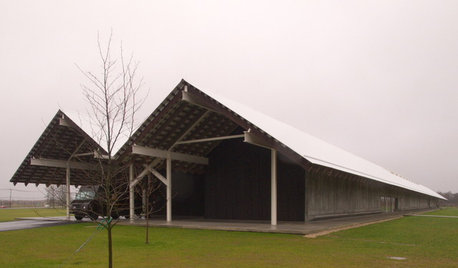Natives and PC
mike_stubbs
21 years ago
Related Stories

EARTH DAYHow to Help Your Town’s Beneficial Birds and Bugs
Make a habitat using local materials to provide a home to the creatures that help our gardens
Full Story
HOUZZ TOURSHouzz Tour: A Maine Beach Cottage Evokes the Sea
Salvaged dock finds, nautical motifs and family heirlooms keep coastal charm flowing all around a Scarborough home
Full Story
HOUZZ TOURSHouzz Tour: A Frank Lloyd Wright Home, Lovingly Restored
In a 15-year labor of love, one dedicated Ohio couple focuses on conserving over remodeling, protecting an architectural legacy
Full Story
GREEN BUILDINGHow to Harvest Rainwater for Your Garden
Conserve a vital resource and save money by collecting stormwater for irrigation in a barrel or tank
Full Story
ARCHITECTURERenowned Architects Give Artworks a Minimalist New Home
A New York museum takes up residence in a newly built minimalist structure, and its architectural features offer lessons for homeowners
Full Story
DECORATING GUIDES30 Beautifully Inventive DIY Christmas Decorations
Get inspired to decorate your home with these easy and affordable holiday crafts
Full Story
GREEN BUILDINGHow to Recycle Your Kitchen
Instead of adding to the junk pile — and paying landfill fees — get rid of old appliances, cabinets and countertops the ecofriendly way
Full Story
HOUZZ TOURSMy Houzz: A Condo of Delightful Curiosities in Louisville
Gorgeous vintage finds and eclectic repurposed pieces shine in this dream renovated retirement home
Full Story
ARTNew Digital Art Frame Gets Put to the Test
Our writer sets up the EO1 at home, then invites artist friends over for a look — at images of their own work. See what they have to say
Full Story
FURNITURE10 Secrets of Successful Secondhand Furniture Shopping
Design professionals offer tips on how, where and what to buy
Full StorySponsored






JenniferP
haller
Related Professionals
Danbury Landscape Architects & Landscape Designers · North New Hyde Park Landscape Architects & Landscape Designers · Quincy Landscape Architects & Landscape Designers · Dunwoody Landscape Contractors · Lady Lake Landscape Contractors · Middle River Landscape Contractors · Smyrna Landscape Contractors · Tacoma Landscape Contractors · Annapolis Siding & Exteriors · Lawrenceville Siding & Exteriors · Littleton Siding & Exteriors · St. Louis Siding & Exteriors · Cheshire Solar Energy Systems · Little Ferry Solar Energy Systems · New Canaan Solar Energy SystemsFireraven9
seraphima
garden_gal_fl (z10)
chroma2424
paul_m
caitzs
frostfreetemperate
Judy_B_ON
Fireraven9
seraphima